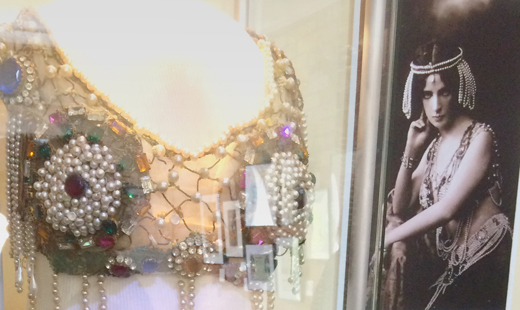Curator's Message
Maud Allan’s story reads like a modern-day tabloid … filled with libel suits, murder and tempestuous love affairs. At the height of her career, Maud was a dance sensation in Edwardian London where she was the face of collectors’ items ranging from cigarette silks to coffee tins. She was a contemporary of the forerunners of modern dance: Loie Fuller, Isadora Duncan and Ruth St. Denis, but is the least known of this group of revolutionary dance artists. She attained international stardom through her tasteful “dance interpretations”, which she cleverly contrasted with the daring costume she wore in her chef d’œuvre The Vision of Salomé. Women adorned their clothing with beads to imitate the spectacular garment, and newspapers praised the famed “Salomé dancer” for her grace and elegance. As with any public infatuation, however, her success was short-lived. Within two years of her sensational 1908 London debut, Maud’s career began to crumble and she experienced the humiliating fall from international acclaim into obscurity.
Like those in the Edwardian Era, I found myself captivated and inspired by the extraordinary Salomé costume. The intricacy of its beadwork and overall beauty as a garment helped shape the exhibit in terms of its colours and design, while its history and symbolism acted as a blueprint for the content.
Today, as a century-old artifact, the textile’s importance is apparent. The costume’s significance to Canadian dance history was recognized by the Canadian Conservation Institute in its willingness to accept the garment for conservation treatment. Acknowledgement of the costume as a significant Canadian artifact affirms DCD’s place within Canada’s cultural heritage and reiterates the importance of preserving and sharing these dance legacies on both a national and global level.
Through this virtual exhibit, we hope that you will join DCD in celebrating the life and career of this astonishing Canadian dancer whose story has been all but forgotten.





